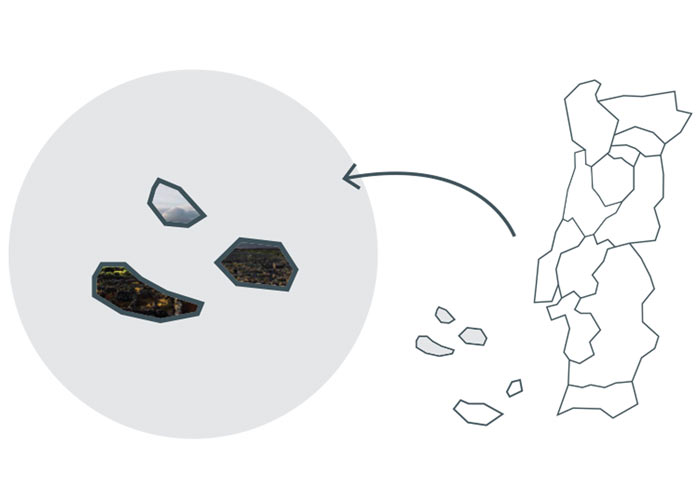Wine regions
Portuguese wine regions
Azores
A bit of history
The Azores, an archipelago made up of nine islands, was discovered in 1427 by Diogo Alves. In the same year, the first settlers arrived in the islands and started growing vines.
In the 17th and 18th Centuries, the wines produced in the Azores, namely the ones produced in Pico, were exported to Russia and most northern European countries. After the Russian revolution in 1917, several bottles of Pico Verdelho were found kept in cellars belonging to ancient Russian czars.
What to expect?
The climate is mild and moist all year, and swiftly changeable: rain, wind, mist, or a teasing sun behind a veil of thin cloud. Lichens, ferns and mosses thrive, and there’s plenty of bright green grass to nurture the dairy cows.
The backdrop is spectacular: active volcanos, crater lakes, waterfalls, beaches composed of swirls of lava, Portugal’s highest mountain (the volcanic peak of the the island of Pico), and hot plains where you can literally cook your dinner. Vines are planted into rock or poor volcanic soils.
The occasional vineyard is trained along modern wires, but most vines still grow within traditional currais, small enclosures of dry stone walls, sometimes no more than two or three metres square. Apart from disposing of volcano-scattered stones, these walls give protection from ocean winds, and radiate heat at night.
By far the majority of the vines grown on the islands are American species, planted after phylloxera. They make a curiously musky wine known as vinho de cheiro or ‘fragrant wine’ – loved by the islanders as well as island emigrés in Canada and the USA.
The Azores have no DOP regions, but do have three IPR regions (DOPs-in-waiting): Pico, Biscoitos and Graciosa. Two are fortified (16%+) and wood-aged: IPR Pico (grown on two small coastal patches of the island) and Biscoitos (a tiny, coatal part of the island of Terceira).
The wines are made from Verdelho, Arinto and Terrantez. IPR Graciosa is for unfortified white wine made from the same three grapes plus Fernão Pires and Malvasia Fina. More Vinho Regional Açores is made today than IPR. Inevitably in this cool climate it is mostly white, but there is some good, light red, including some Merlot.
Common varieties: Arinto, Boal, Fernão Pires, Terrantez e Verdelho.
Adapted from: CVR Açores, Wines of Portugal, Instituto do Vinho e da Vinha.

approx. £47.01
White WineMaçanitaTerrantez do Pico 2023, 75clPico Island, Azores
White: Full-bodied
12%

